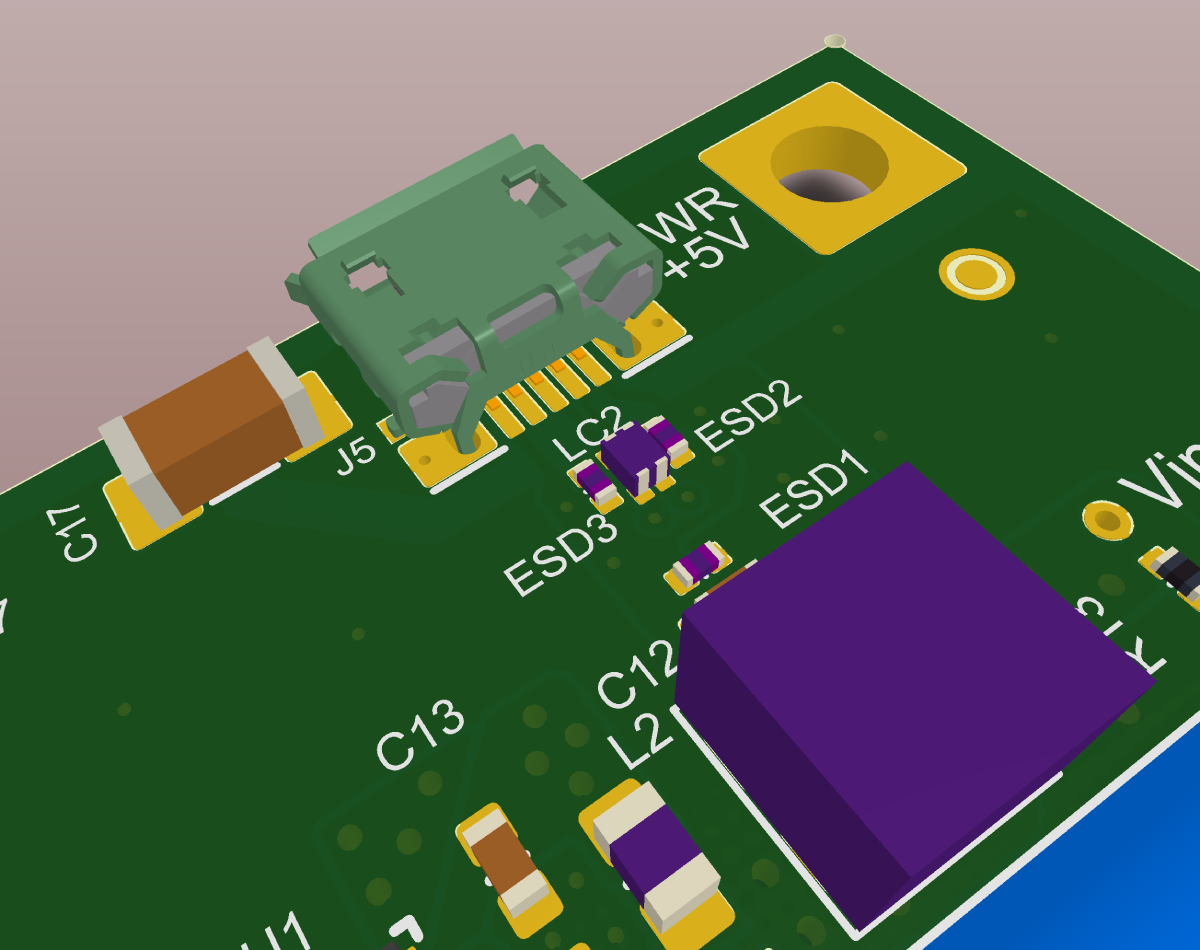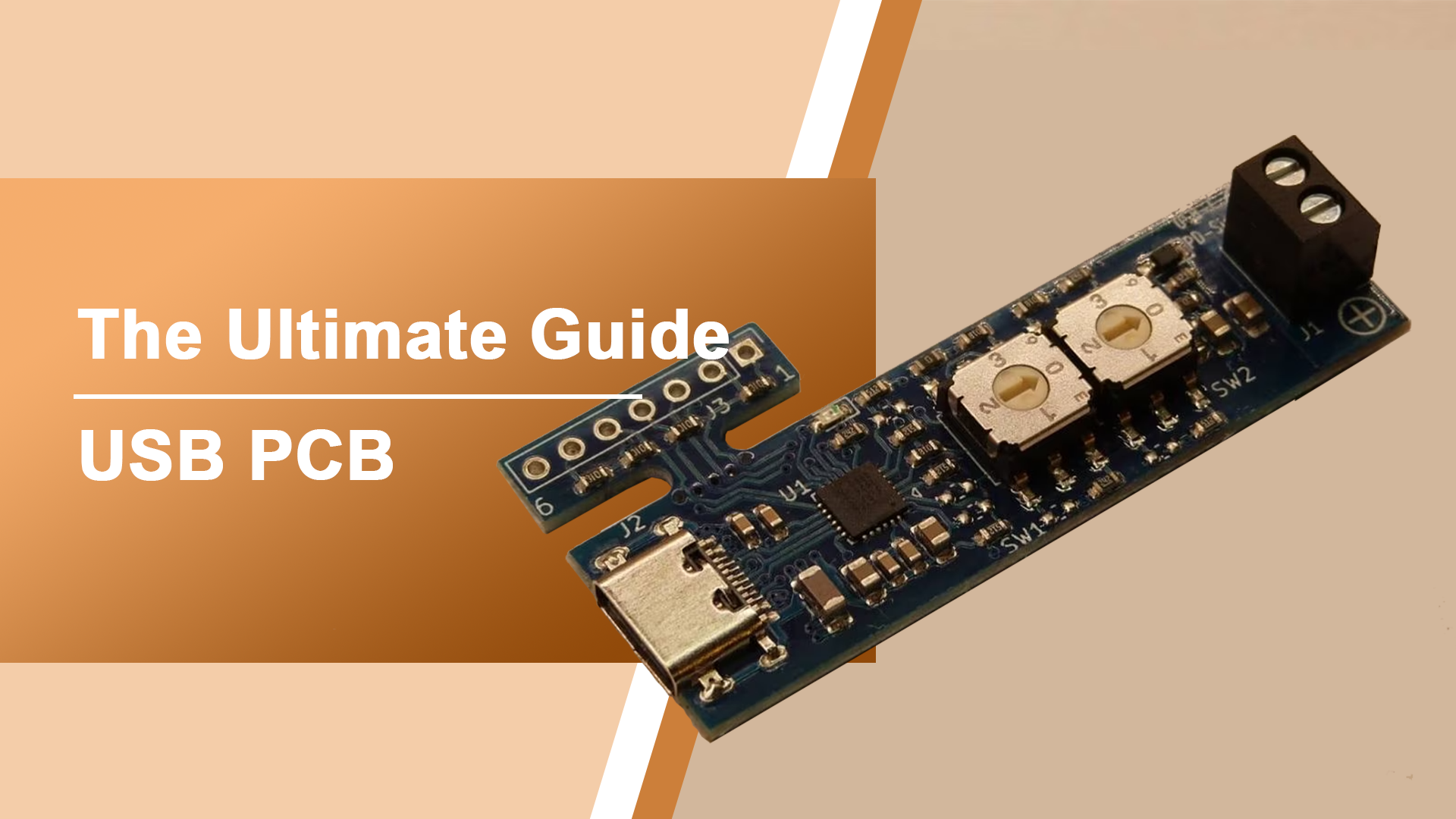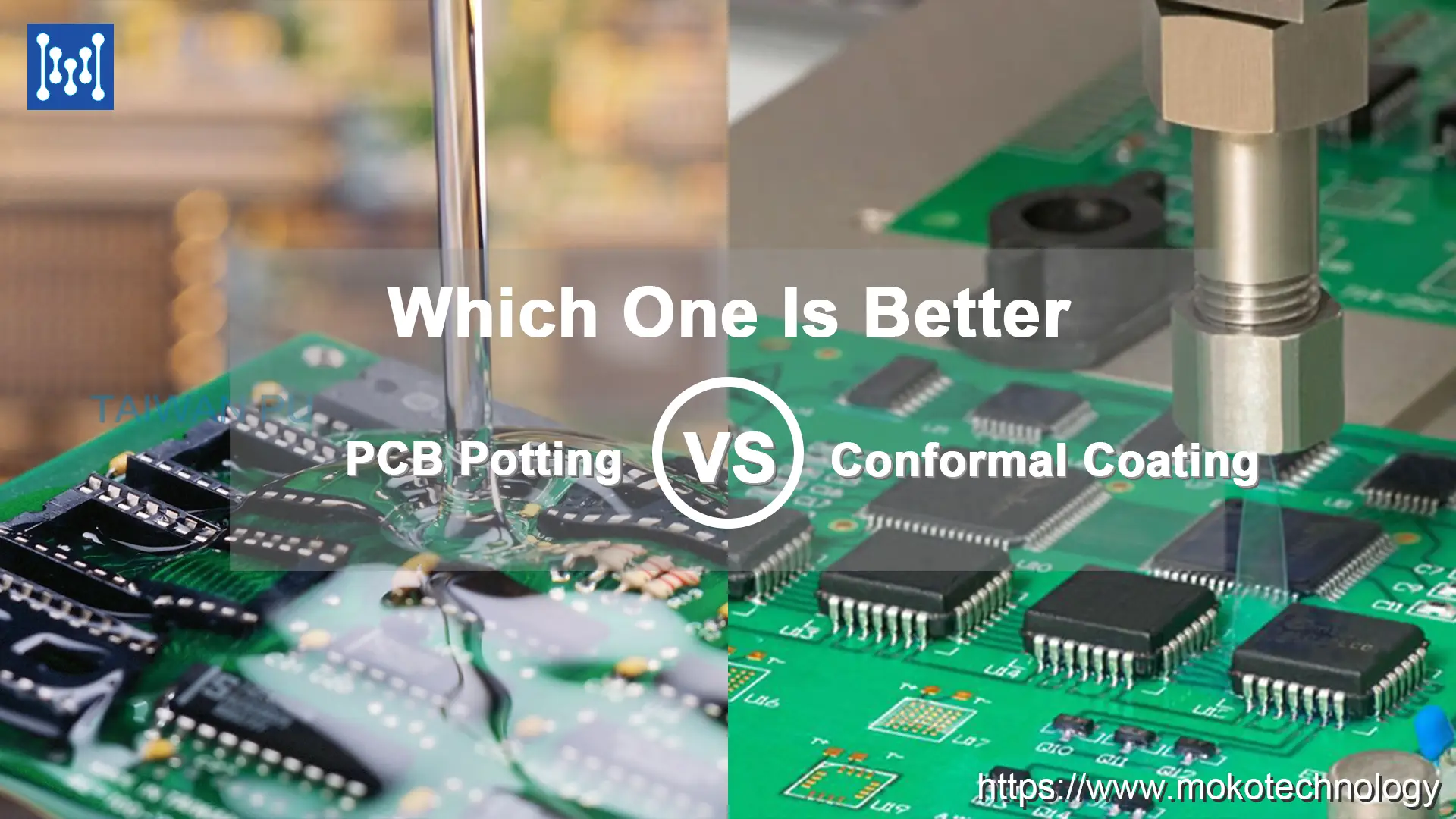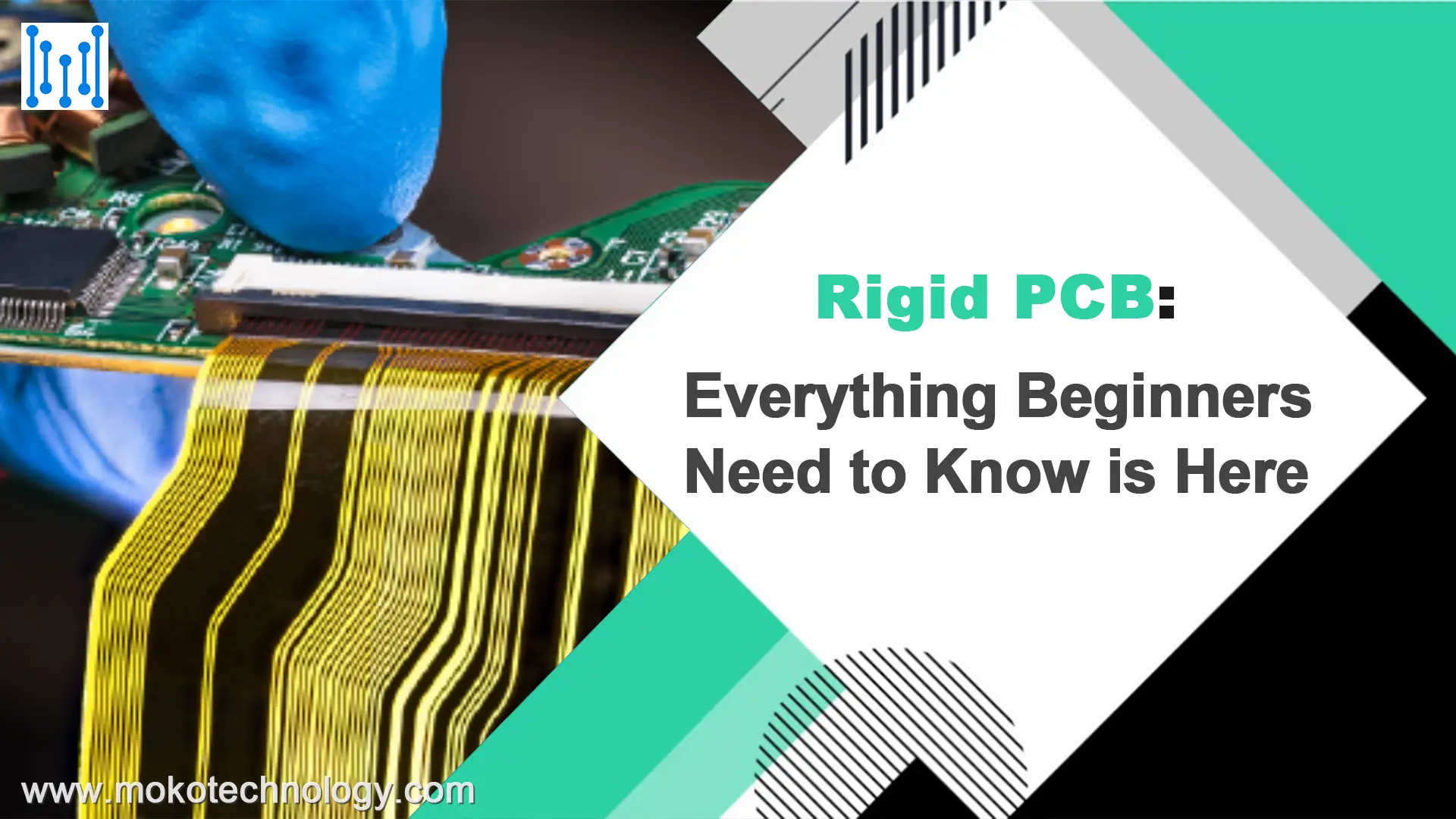The ubiquitous Universal Serial Bus (USB) has become an indispensable part of modern technology. From smartphones to laptops, printers to game controllers, USBs connect almost everything to the digital world. But what makes USBs so crucial in our daily lives is not just the cable or connector but also the printed circuit board (PCB) that lies beneath. The USB PCB acts as the foundation that enables data transfer, charging, and other functions. In this ultimate guide, we will delve into the world of USB PCB, introducing their advantages, limitations, design considerations, and so on. Let’s read on.
What Is USB PCB
USB PCB refers to a circuit board containing a USB connector, which is used to control data transmission between different circuit boards or electronic products. These PCBs have excellent current conduction performance, high thermal management, impedance matching, dielectric properties, etc., making them the preferred circuit solution in almost all gadgets, and play an important role in electronic applications such as computers, mobile devices, printers, smartphones, etc. Their use cases include locking and unlocking computer devices, backing up folders, running programs connected to wireless networks, and more. In addition, industrial and medical equipment also consist of Universal Serial Bus PCBs. These boards are highly resistant to extreme mechanical and electrical forces.
Advantages and Limitations of USB PCB
The advantages of USB PCBs are noteworthy, including their ability to ensure high-speed data transfer regardless of the USB type, version, or hardware used. USB connectors attached to the PCB are a cost-effective solution for storing large amounts of information. Additionally, USB PCBs maintain signal integrity by shielding against various types of noise, and they are compatible with almost every data transmission device. USB hub PCBs allow for the connection of multiple devices simultaneously, and their top-notch thermal management ensures high durability. Furthermore, these PCBs support an auto-configuration system after the initial installation of driver software.
However, USB PCBs also have limitations that must be considered when selecting USB connectors for applications. For example, some circuit boards, such as USB flash drive PCBs, are vulnerable to security threats and malware contamination. The longevity of mini USB PCB connectors is not as impressive as other USB connectors, and their less robust design requires additional care to protect against mechanical stress.
To mitigate these limitations, it is essential to take an intelligent approach and obtain USB circuit boards from a reputable manufacturer while also checking the quality of PCB components.
Common Causes of USB PCB Failure
Temperature Change: Sudden fluctuations in temperature can have a negative impact on the PCB. The changes in temperature can affect the durability and functionality of the dielectric material, and can also harm the stability of the impedance.
Power Delivery Problems: Power delivery issues can occur due to inadequate power circuitry or excessive power draw by the device. This can cause voltage drops, power supply noise, and device malfunction.
ESD Damage: USB interfaces are susceptible to damage from electrostatic discharge (ESD), which can cause permanent damage to the interface or its components. ESD protection devices should be incorporated into the design to prevent such damage.
Manufacturing Defects: PCB manufacturing defects can cause issues such as misaligned or missing traces, faulty components, or improper soldering. These defects can lead to malfunction or failure of the USB interface.
Mechanical Failure: USB connectors are often subject to mechanical stress, which can cause the connector to fail or the connection to become loose. This can result in intermittent connectivity or complete failure of the USB interface.
Signal Integrity Issues: Signal integrity problems can occur due to improper routing, impedance mismatch, or interference. These issues can lead to data corruption, slow data transfer rates, and even complete data loss.
Compatibility Issues: USB interfaces are required to be compatible with other USB devices. Compatibility issues can arise due to non-compliance with USB standards or differences in USB protocols used by different devices.
Challenges in USB Circuit Board Design

Designing a USB circuit board without errors can be challenging and requires preventative measures. To ensure signal integrity, the DM and display port should have the same coverage gap to avoid timing issues that can result in data errors. It’s important to carefully balance the data trace distance and range. Another challenge is the effective resistance of the electric circuit to alternating current, which can be reduced by matching the DP and DM on the PCB to reduce wave reflection. Care should be taken to avoid adding stubs during the base current diode placement, which can weaken data wave strength. Additionally, the DM and DP signals should consistently go through the USB ground plane to avoid the risk of splits under their plane. Finally, selecting a suitable power arrangement during the USB coupling design is crucial, as producers need to consider how current will enter the USB integrated circuit.
USB PCB Design Considerations
When designing a printed circuit board (PCB) with a USB interface, there are several important considerations that must be taken into account. Here are some of the key USB PCB design considerations to keep in mind:
- USB Connector Selection: Choose the appropriate USB connector based on the USB version (2.0, 3.0, 3.1, Type-C), the required mechanical strength, and the available PCB space.
- Signal Integrity: Maintain signal integrity by ensuring proper routing, impedance matching, and signal shielding. USB data signals require differential signaling, so it’s essential to minimize signal crosstalk and ensure the proper signal termination.
- Power Delivery: USB provides power to devices, so ensure that the power delivery circuitry is designed appropriately. Follow USB specification guidelines for maximum current and voltage ratings.
- Grounding: Grounding is essential to maintain signal integrity and to ensure the reliable operation of the USB interface. Make sure that the ground plane is continuous and connected to the USB connector shell.
- ESD Protection: Incorporate electrostatic discharge (ESD) protection circuitry to prevent damage to the USB interface caused by static discharge.
- PCB Stackup: The PCB stackup should be designed with impedance matching in mind. Consider using a controlled-impedance stackup to ensure consistent signal performance.
- Mechanical Considerations: It’s important to ensure that the USB connector is securely attached and can withstand anticipated mechanical stresses. Additionally, there should be ample clearance between the USB connector and other components to avoid interference.
- USB Compliance: Follow the USB specification guidelines to ensure that the USB interface is compliant and compatible with other USB devices.
- Signal Integrity Analysis: Perform signal integrity analysis to identify and resolve any signal integrity issues before PCB fabrication.
- Testing: Test the USB interface thoroughly to ensure reliable operation and compliance with USB specifications.
Final Thoughts
To sum up, USB PCBs are now an indispensable part of modern electronic devices due to their ability to facilitate high-speed data transfer and large data storage capacities. Choosing the right type of USB PCB connector, components, and design is crucial in meeting the increasing demand for these features. If you’re looking for a reliable and experienced PCB supplier, MOKO Technology is an excellent choice. With strict quality control measures and years of experience, we can provide high-quality PCBs for USB and other electronic devices. We can fabricate and assemble a variety of USB PCBs such as vertical through-hole PCB, top-mount USB circuit boards, bottom-mount USB PCB, and so on. Contact us today to discuss your USB PCB requirements and enhance the performance of your USB devices.




